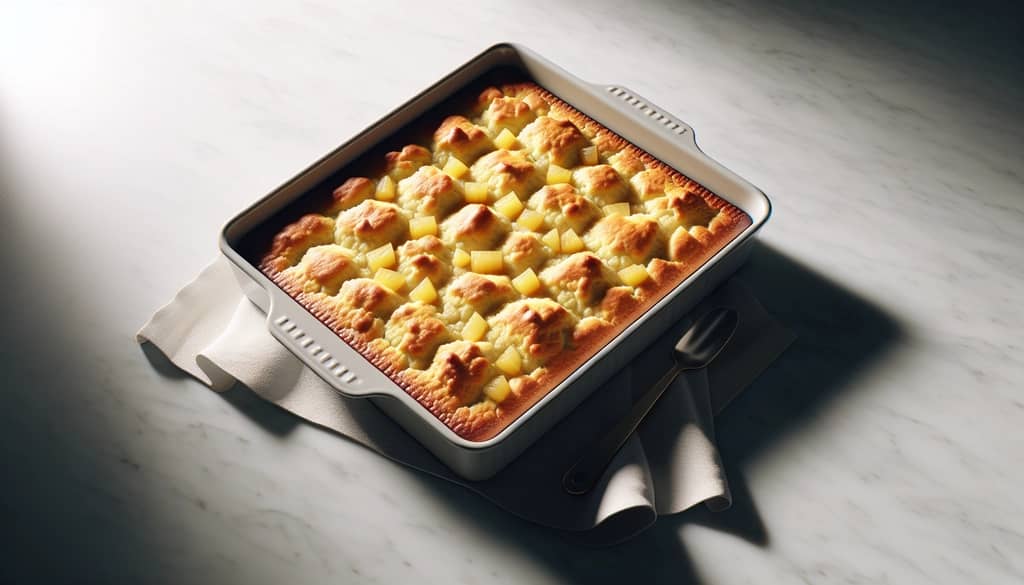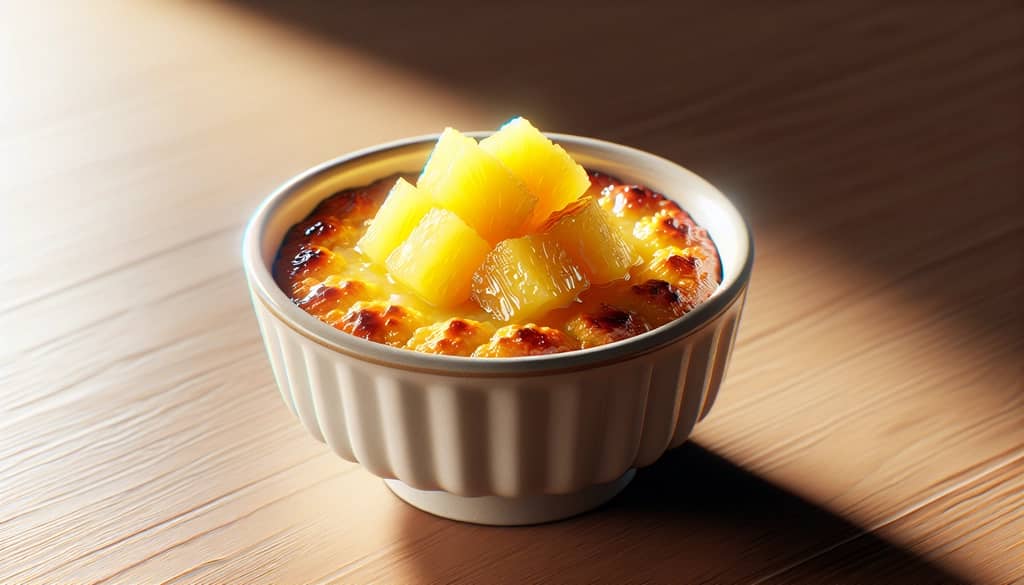Updated on: 6/3/2025
Can You Use Fresh Pineapple in Cobbler? Flavor, Technique & Pro Tips

Fresh pineapple in a cobbler recipe brings vibrant flavor and a tropical twist. Compared to canned pineapple, the differences in taste, texture, and juiciness can transform your dessert. Yet, using raw pineapple does come with unique preparation steps and flavor considerations for the perfect result.
Why Choose Fresh Pineapple for Cobbler?
Fresh pineapple cobbler recipes are prized for bright acidity, tang, and a clean fruit-forward character. Unlike canned versions, fresh fruit is free from added syrup or sugar, letting you control sweetness. The difference is noticeable in a finished cobbler—both in flavor intensity and texture.
- Bolder, juicier pineapple taste compared to canned.
- No preservatives or syrup, so flavor remains natural.
- Control over texture—can chop chunkier or finer, depending on your style.
Preparation: How to Use Fresh Pineapple in Cobbler
Pineapple contains natural enzymes—mainly bromelain—that soften fruit and break down proteins. Left unchecked, this can make the filling watery or impact the cobbler topping's setting as it bakes. With attention to prepping and balancing, you can highlight the fruit's best qualities.
- Peel, core, and chop into 15–20 mm (bite-sized) cubes for even baking.
- Always taste before using—some pineapples are much sweeter or more tart.
- If fruit is extra juicy, consider draining or patting dry to avoid a soggy result.
- A brief pre-cook in a saucepan with sugar and a dash of lemon juice helps concentrate flavors and reduce excess moisture.
Troubleshooting: Texture & Juiciness
- If your fruit sauce is too thin, stir in 15 ml cornstarch mixed with 30 ml cold water, simmering the fruit mixture just until thickened.
- Browning the pineapple lightly before baking can mellow acidity and firm up texture.
- Always bake until the topping is fully set; fresh pineapple's moisture may matter here.

Flavor-Boosting Tips for Fresh Pineapple Cobbler
- Sprinkle 2–3 ml freshly grated nutmeg or ginger over the fruit for warmth and zip.
- A splash of 15 ml dark rum or 5 ml vanilla extract adds aromatic depth.
- Combine pineapple with 50–100 ml other fruit (mango, strawberry, coconut flakes) for layered flavors.
- Top warm servings with vanilla ice cream or coconut yogurt for a creamy, cooling finish.
Fresh Pineapple Cobbler Recipe (Easy, Vibrant & Juicy)
This approach uses pure fresh fruit, leverages its tang, and showcases a classic drop-biscuit topping. Adjust sugar to your pineapple’s ripeness and taste for best results.
- 600 ml fresh pineapple (peeled, cored, chopped in cubes)
- 50–80 ml granulated sugar (adjust to taste)
- 15 ml fresh lemon juice
- 15 ml cornstarch
- 1 ml fine salt
- 2 ml vanilla extract (or 15 ml dark rum, optional)
- Cobbler topping: 150 ml all-purpose flour, 15 ml sugar, 2 ml baking powder, 60 ml cold butter (cubed), 80 ml milk
- Preheat oven to 180°C (350°F).
- Mix pineapple with sugar, lemon juice, cornstarch, salt, and vanilla in a saucepan.
- Cook over medium-low heat, stirring, until bubbling and slightly thickened (about 5 minutes). Spread into a 20 cm baking dish.
- Combine flour, sugar, and baking powder. Cut in cold butter until crumbs form. Stir in milk.
- Spoon dollops of topping over pineapple. Bake 30–40 minutes until golden and bubbling.
- Cool 10–15 minutes before serving for best texture.

Checklist: Getting the Best Out of Fresh Pineapple
- Choose ripe, sweet-smelling pineapple for natural sugar and less acidity.
- Balance the juiciness by partially cooking or draining before baking.
- Season and sweeten to match the fruit—not just the recipe.
- Monitor bake time and texture—fresh fruit may require slight adjustment from standard recipes.
With a bit of prep, using fresh pineapple in cobbler yields a bold, juicy, and truly homemade dessert—one that bottled fruit can't quite match.